
How to Use 5V 20A DC: Examples, Pinouts, and Specs
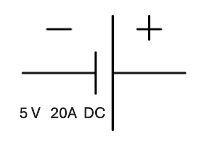
 Design with 5V 20A DC in Cirkit Designer
Design with 5V 20A DC in Cirkit DesignerIntroduction
The 5V 20A DC power supply is a reliable and efficient source of direct current (DC) power, delivering a stable 5 volts with a maximum current capacity of 20 amperes. This power supply is commonly used in applications requiring high current, such as powering LED strips, single-board computers (e.g., Raspberry Pi), motor drivers, and other electronic devices or circuits. Its robust design ensures consistent performance, making it ideal for both hobbyist and industrial use.
Explore Projects Built with 5V 20A DC
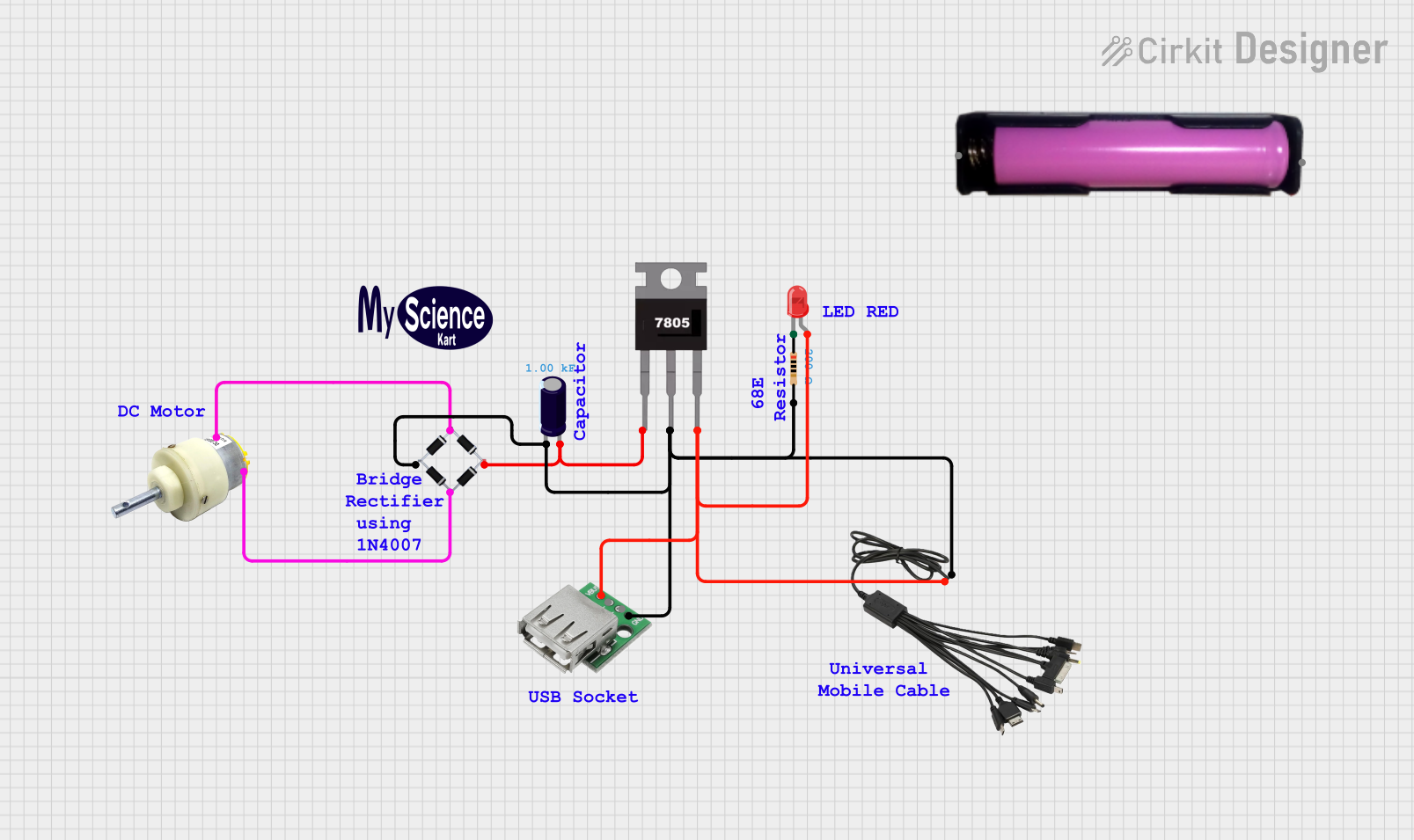
 Open Project in Cirkit Designer
Open Project in Cirkit Designer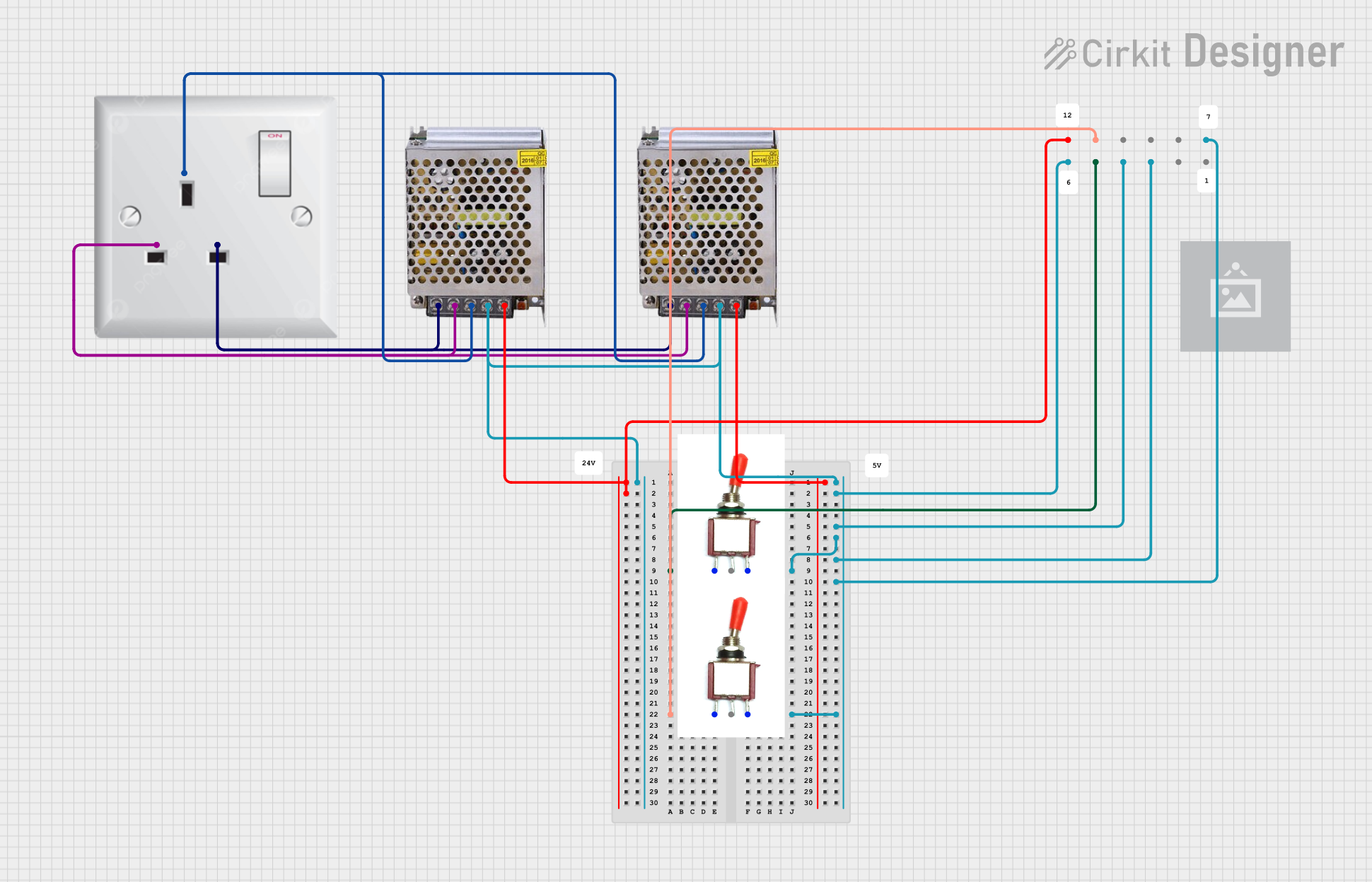
 Open Project in Cirkit Designer
Open Project in Cirkit Designer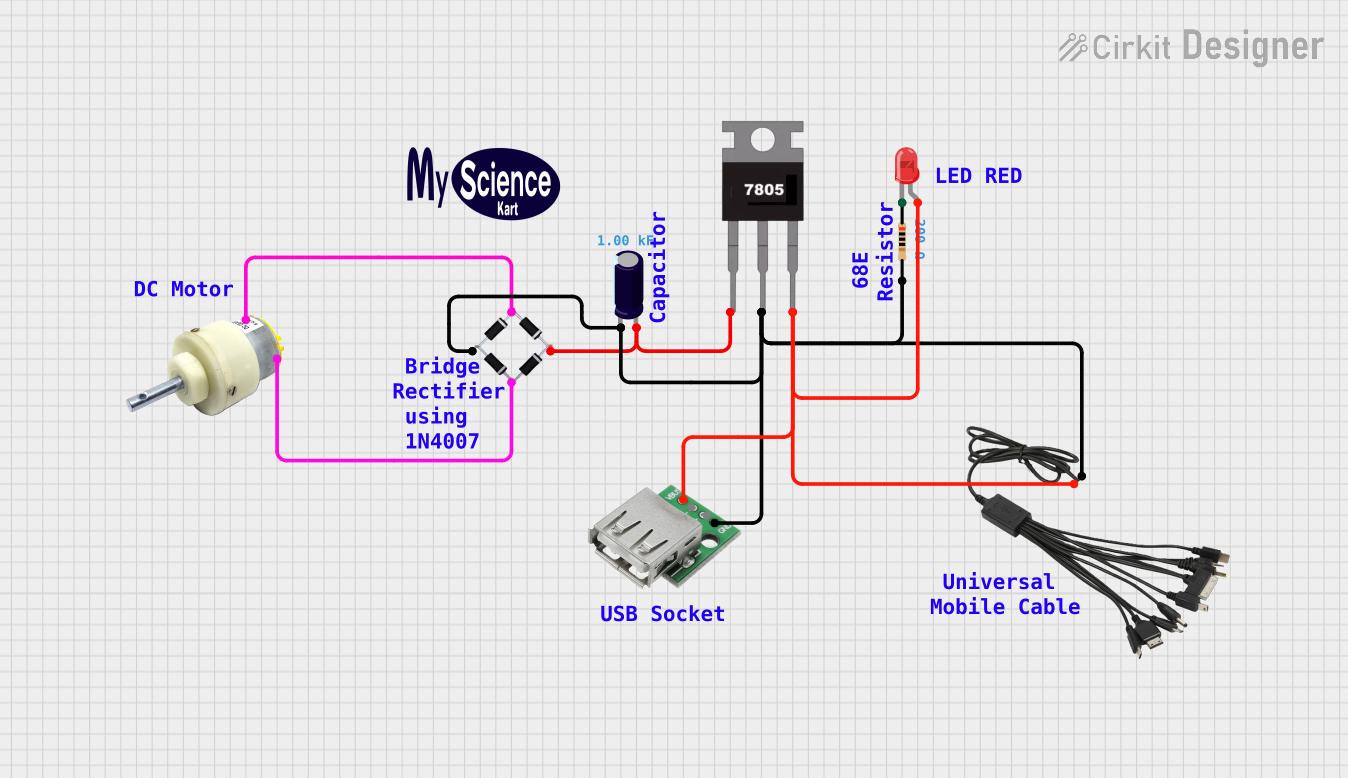
 Open Project in Cirkit Designer
Open Project in Cirkit Designer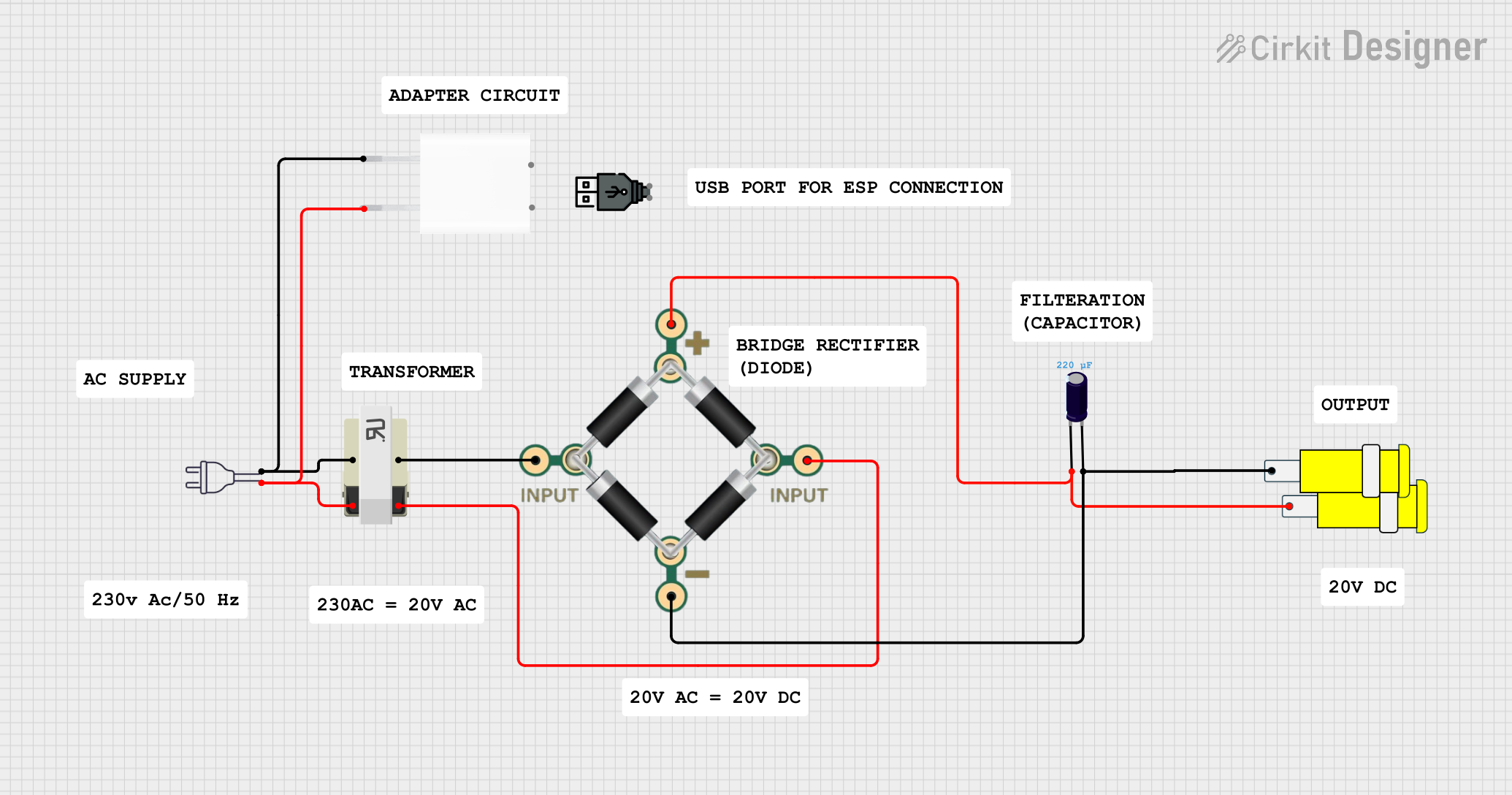
 Open Project in Cirkit Designer
Open Project in Cirkit DesignerExplore Projects Built with 5V 20A DC

 Open Project in Cirkit Designer
Open Project in Cirkit Designer
 Open Project in Cirkit Designer
Open Project in Cirkit Designer
 Open Project in Cirkit Designer
Open Project in Cirkit Designer
 Open Project in Cirkit Designer
Open Project in Cirkit DesignerTechnical Specifications
Below are the key technical details of the 5V 20A DC power supply:
| Parameter | Value |
|---|---|
| Input Voltage | 100-240V AC (50/60Hz) |
| Output Voltage | 5V DC |
| Maximum Output Current | 20A |
| Power Output | 100W |
| Efficiency | ≥85% |
| Ripple and Noise | ≤120mV |
| Operating Temperature | -10°C to +50°C |
| Protection Features | Overload, Overvoltage, |
| and Short Circuit |
Pin Configuration and Descriptions
The power supply typically has the following input and output terminals:
Input Terminals
| Pin | Label | Description |
|---|---|---|
| 1 | L | Live AC input (110-240V AC) |
| 2 | N | Neutral AC input |
| 3 | GND | Ground connection for safety |
Output Terminals
| Pin | Label | Description |
|---|---|---|
| 1 | V+ | Positive DC output (5V) |
| 2 | V- | Negative DC output (Ground) |
Usage Instructions
How to Use the Component in a Circuit
Connect the Input Terminals:
- Ensure the power supply is disconnected from the AC mains before wiring.
- Connect the "L" terminal to the live wire and the "N" terminal to the neutral wire of the AC mains.
- Connect the "GND" terminal to the ground for safety.
Connect the Output Terminals:
- Use the "V+" terminal for the positive 5V DC output.
- Use the "V-" terminal for the ground connection of your circuit.
Power On:
- After verifying all connections, plug the power supply into the AC mains and switch it on.
- Use a multimeter to confirm the output voltage is 5V before connecting your load.
Connect the Load:
- Attach your device or circuit to the output terminals, ensuring the current draw does not exceed 20A.
Important Considerations and Best Practices
- Current Limitation: Ensure the connected load does not exceed the maximum current rating of 20A to avoid overheating or damage.
- Ventilation: Place the power supply in a well-ventilated area to prevent overheating.
- Polarity: Double-check the polarity of the output connections to avoid damaging your circuit.
- Fuse Protection: Consider adding a fuse on the input or output side for additional safety.
- Arduino UNO Example: If powering an Arduino UNO, connect the "V+" terminal to the Arduino's 5V pin and the "V-" terminal to the GND pin. Ensure the current draw of connected peripherals does not exceed the power supply's capacity.
Example Code for Arduino UNO
Below is an example of using the 5V 20A power supply to power an Arduino UNO and control an LED:
// Example: Blink an LED using Arduino UNO powered by 5V 20A DC power supply
const int ledPin = 13; // Pin connected to the built-in LED
void setup() {
pinMode(ledPin, OUTPUT); // Set the LED pin as an output
}
void loop() {
digitalWrite(ledPin, HIGH); // Turn the LED on
delay(1000); // Wait for 1 second
digitalWrite(ledPin, LOW); // Turn the LED off
delay(1000); // Wait for 1 second
}
Note: Ensure the Arduino UNO and any connected peripherals do not exceed the power supply's current rating.
Troubleshooting and FAQs
Common Issues and Solutions
| Issue | Possible Cause | Solution |
|---|---|---|
| No output voltage | Input AC power not connected or switched off | Verify AC input connections and power on. |
| Output voltage is unstable | Overload or insufficient ventilation | Reduce load or improve ventilation. |
| Power supply overheats | Exceeding maximum current rating | Reduce the load to within 20A limit. |
| Device connected to power supply fails | Incorrect polarity or wiring | Double-check wiring and polarity. |
FAQs
Can I use this power supply for devices requiring less than 20A?
- Yes, the power supply will only provide the current required by the device, up to a maximum of 20A.
Is this power supply suitable for outdoor use?
- No, this power supply is designed for indoor use. Use a weatherproof enclosure if outdoor operation is required.
What happens if the load exceeds 20A?
- The power supply's overload protection will activate, shutting down the output to prevent damage.
Can I connect multiple devices to this power supply?
- Yes, as long as the total current draw of all devices does not exceed 20A.
By following these guidelines and best practices, the 5V 20A DC power supply can be safely and effectively used in a variety of applications.